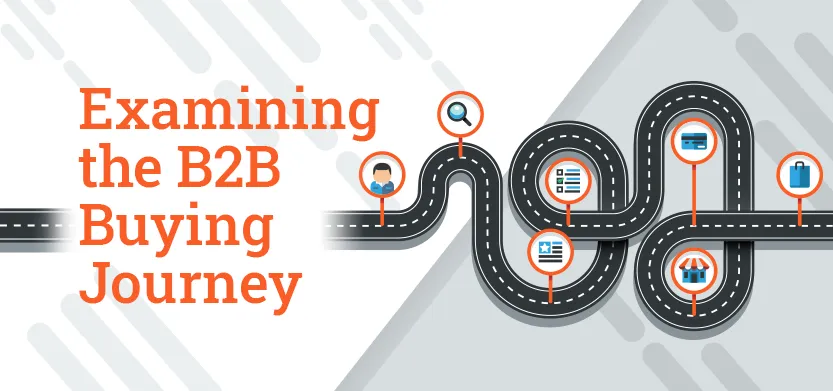
Author
Laura Meshen
, Content Marketing Specialist
Posted in Consulting
January 21, 2021
Examining the B2B buying journey
The B2B buying process has changed. Customer purchase decisions are being made independent of sales reps and traditional sales pipelines. A new understanding of the buying journey is needed for B2B suppliers to succeed.
What do suppliers need to understand about the B2B buying process?
Independent research and consulting with buying group members and stakeholders take up the bulk of buying groups’ activities, leaving a small amount of time to meet with suppliers.
“When buyers are comparing multiple suppliers, the amount of time spent with any one sales rep may be only 5% or 6%.” - Gartner
In order to satisfy the B2B buyer’s needs, suppliers must understand how complex the buying journey has become. If a B2B supplier can ease the burden of the buyer’s journey, they are likely to see increased sales and customer satisfaction in the process.
What do we need to understand about the B2B buying process?
1. How much harder the journey has become.
The decision-making group for a complex B2B solution is now generally made up of between six to ten people. Each of those people has done independent research and each piece will need to be evaluated. This means being reviewed for merit and resolving any conflicting research so the group can come to a consensus.
But, before that consensus can be made, we also have to account for the time and energy each of those decision-makers took to bring their option to the table. Markets are crowded, with the number of options available from new technologies, products, suppliers and services increasing every day. Buyers have to wade through so much information now, that they have a hard time making decisions that lead to a purchase.
2. What jobs it takes to finalize a purchase.
In order to ease B2B buyers through the journey, it is important to understand that there are a set of “jobs” a buyer goes through to reach a final purchase.
- Identifying the problem: this is the “we need to do something” step. Customers realize there is a problem and a solution must be found.
- Exploring solutions: think of this as the “what can solve our problem” step. Customers embark at the beginning of their solution research phase.
- Requirement evaluation: “what exactly do we need this purchase to do?” this is where the customer outlines what they expect the solution to do for their company.
- Supplier selection: “Does this solution provider do what we need it to?” this is when further evaluation of specific suppliers takes place.
- Solution validation: “We are pretty sure this is the right solution, but we need to be sure”.
- Consensus creation: “This is the solution we need, now we have to get everyone on board.”
3. The buying journey isn’t linear
In the world of B2B buying, the six jobs outlined above do not happen in a sequential fashion. Instead, a typical B2B purchaser revisits each job at least once. In this Gartner illustration, you can see how unpredictable the journey can be from start to finish.
4. Better information makes the process easier for buyers.
Supplier information has a key role to play in the buying process. As a supplier, your goal should be to provide reliable, accurate and trustworthy information to your prospective buyers. But, to provide even more value to your buyers, find ways to provide information that helps them make their buying jobs easier. Try to make proactive content, anticipating questions and roadblocks that may occur specific to your product or service, and give your clients the information needed to clear those hurdles before they get to them.
5. Anticipating the purchaser’s needs is a supplier’s responsibility.
Being a good supplier is not just about the product or service your organization provides. A great supplier knows how to anticipate the purchaser’s needs and provide them with the information they need to complete their buying jobs with ease. If your prospective buyer is struggling to get through the journey and not getting the information they need from you, they will abandon your organization as an option. Enabling the buyer, or giving them the information they need in a way that helps them complete critical buying jobs, will allow your company to stand out in the marketplace.
In conclusion, it is important for B2B suppliers to understand the complexities that B2B buyers face. Just as importantly, for a B2B supplier to succeed, they need to find ways to enable B2B buyers in their buying journey.
Does the information your organization provides help your clients or prospective clients in their buying journey? If not, it may well be time to find ways to update that information. Talk to one of our B2B digital transformation experts to see how you can better align your offerings with what your clients need.


